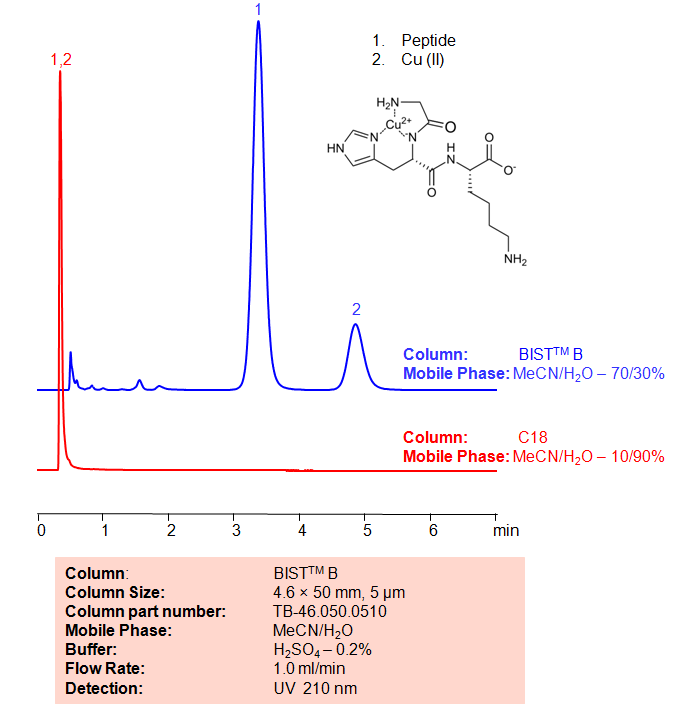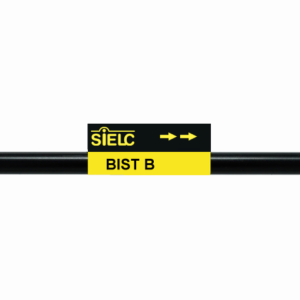Separation type: Bridge Ion Separation Technology, or BIST™
High Performance Liquid Chromatography (HPLC) Method for Analysis of Copper peptide GHK-Cu
Copper peptide GHK-Cu is a copper complex of glycyl-L-histidyl-lysine and can be naturally found in urine, saliva, and plasma. Research has shown that it may promote wound healing, attract immune cells, stimulate collagen, and act as an antioxidant and anti-inflammatory compound. Using SIELC’s newly introduced BIST™ method, Copper peptide GHK-Cu, which separates in water, can be retained on a positively-charged anion-exchange BIST™ B column. There are two keys to this retention method: 1) a multi-charged, negative buffer, such as Sulfuric acid (H2SO4), which acts as a bridge, linking the positively-charged Copper and peptide to the positively-charged column surface and 2) a mobile phase consisting mostly of organic solvent (such as MeCN) to minimize the formation of a solvation layer around the charged analytes. Using this new and unique analysis method, Copper peptide GHK-Cu can be separated, retained, and UV detected at 210 nm
| Column | BIST B, 4.6×50 mm, 100A |
| Mobile Phase | MeCN – 70% |
| Buffer | H2SO4 – 0.2% |
| Flow Rate | 1.0 ml/min |
| Detection | UV 210 nm |
| Class of Compounds | Peptide, Metal |
| Analyzing Compounds | Copper peptide GHK-Cu |
Application Column
BIST B
BIST™ columns offer a unique and effective way to achieve separations that were traditionally challenging or even impossible with other HPLC columns. With the use of a special mobile phase, these ion exchange columns provide very strong retention for analytes with the same charge polarity as the stationary phase, unlocking new chromatography applications. What makes BIST™ columns stand out is their proprietary surface chemistry, which results in superior selectivity, resolution, and sensitivity. These columns offer a simple, efficient solution for a variety of analytical challenges, making them an excellent choice for researchers and analysts across many different fields. To learn more about the technology that powers BIST™ columns and to explore related applications, check out https://BIST.LC.
Select options





